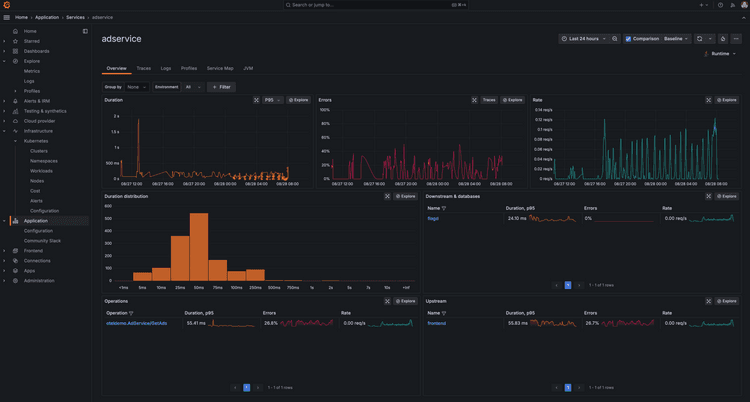
Maximizing ROI with Observability: Best Practices for Success
Unlock the full potential of observability with strategies to maximize ROI and foster innovation. Learn best practices like leveraging AI for root cause analysis, managing costs with data tiering, and reducing alert fatigue. Discover how to align observability with business goals, streamline workflows, and improve resilience based on insights from the State of Observability 2024 report.
Introduction: Observability as a Strategic Advantage
In today’s fast-paced digital world, observability is no longer just about avoiding downtime—it’s about creating opportunities for growth and innovation. Mature observability practices empower organizations to resolve issues faster, innovate at speed, and enhance customer experiences, all while delivering exceptional ROI.
This article explores proven strategies to maximize the return on your observability investments, inspired by insights from the State of Observability 2024 report. Whether you’re starting out or refining a mature observability practice, these best practices will help you unlock value, improve resilience, and foster innovation.
1. Build Foundational Visibility Across Your Stack
Observability begins with complete visibility into your technology ecosystem—on-premises, cloud, and hybrid. Yet, only 24% of organizations report excellent data correlation across their environments.
• Why It Matters: Gaps in visibility hinder troubleshooting and delay issue resolution, costing both time and money.
• Best Practice: Adopt OpenTelemetry to standardize data collection and break down silos across tools. OpenTelemetry provides flexibility, preventing vendor lock-in while enabling seamless integration with your existing stack.
2. Optimize Alert Management to Reduce Noise
With an average of 23 observability tools in use, many organizations struggle with alert fatigue. In fact, 57% of respondents cite it as a significant challenge.
• Why It Matters: Excessive or low-quality alerts can lead to burnout, missed issues, and slower resolution times.
• Best Practice: Focus on actionable alerts tied to Service Level Objectives (SLOs). Use AI-powered tools to aggregate and prioritize alerts, reducing noise and ensuring teams respond to critical issues promptly.
3. Leverage AI for Faster Root Cause Analysis
AI and machine learning (ML) are transforming observability by automating root cause analysis and anomaly detection. Leading organizations are 85% more likely than beginners to use AI for remediating alerts.
• Why It Matters: Faster root cause analysis minimizes downtime, which costs organizations an average of $540,000 per hour.
• Best Practice: Integrate AIOps into your observability stack to detect anomalies, correlate events, and recommend resolutions. Generative AI tools can further enhance insights by enabling natural language queries for non-technical users.
4. Foster Developer Productivity with Standardized Workflows
At leading organizations, developers spend 38% more time on innovation than their peers at beginner-level companies. This is enabled by streamlined observability workflows and platform engineering practices.
• Why It Matters: Streamlined workflows reduce operational overhead, enabling developers to focus on delivering new features and improving customer experiences.
• Best Practice: Implement platform engineering teams to create self-service observability workflows. Standardize data pipelines and dashboards to reduce cognitive load on developers.
5. Prioritize Cost Management with Data Tiering
Data volumes are skyrocketing, and without effective management, observability costs can spiral. Leaders are 2x more likely than beginners to use data tiering to control costs.
• Why It Matters: Not all telemetry data is equally valuable. Storing low-priority data in expensive storage solutions wastes resources.
• Best Practice: Use data tiering to store critical data in high-performance systems while archiving less frequently accessed data in cost-efficient cold storage.
Optimizing data storage is essential to controlling observability costs. Learn how smarter logging strategies can help you balance performance with budget efficiency.
6. Embrace a Culture of Observability
Organizations that prioritize observability as a cultural value achieve faster resolution times and higher innovation rates. This means embedding observability practices into every decision and process.
• Why It Matters: Observability isn’t just a tool—it’s a mindset that drives better decision-making and aligns teams around shared goals.
• Best Practice: Encourage cross-team collaboration by sharing observability data and dashboards. Align security and observability workflows to improve Mean Time to Resolve (MTTR), as 73% of leaders have done.
Security and observability go hand in hand. See how real-time threat detection strengthens both compliance and resilience.
Conclusion: Turn Observability into ROI
Mature observability practices deliver measurable value—2.67x ROI for leading organizations, according to the State of Observability 2024. By focusing on foundational visibility, streamlining workflows, and leveraging AI and data tiering, you can transform observability from a cost center into a growth enabler.
Ready to elevate your observability practice? Explore how O11y can help your organization unlock its full potential. Contact us today.
For more actionable insights, explore our guides on Extending Browser Event Storage and Diagnosing Missing Transactions in New Relic.
State of Observability 2024. Published by Splunk LLC, 2024.